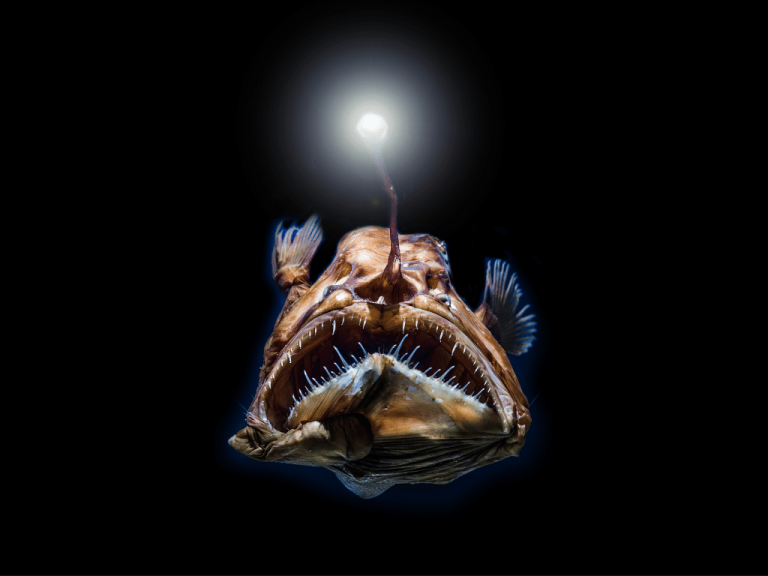Most marine fish, especially certain species living in the deep sea at depths of 2000-2500 meters where light is relatively dim, often emit brilliant light. For example, there is a type of anglerfish that has a “fishing rod” on its head, with the tip emitting intermittent flashes of light to lure small fish. Deep-sea bottom dwellers like electric rays can also emit light.
Through numerous experiments and studies, scientists have begun to uncover the secrets of how fish produce light. They have found that these fish have photophores distributed throughout their bodies. Simple photophores are just tubular glands that open to the surface of the skin. Some more complex ones have a cover membrane over the photophore. Most fish have photophores distributed on both sides of their ventral surfaces, embedded in the skin. However, in some species, they are found on the head, whiskers, tongue, teeth, and even internal organs. For instance, the anglerfish has photophores on its “fishing rod.” The Japanese pinecone fish has photophores under the lower jaw. Toadfish have 840 photophores arranged in rows in the skin, forming specific patterns. The photophores of the soldierfish open near the anus; another type of soldierfish has photophores embedded in the intestinal wall tissue.
How do photophores emit light?
The gland cells of the photophores secrete a phosphorus-containing mucus, which emits light when oxidized by an enzyme. Additionally, many fish have bioluminescent bacteria living within their photophores, which emit light due to bacterial activity. When the fish is mechanically or chemically stimulated, the muscles at the base of the photophore, controlled by nerves, begin to contract, squeezing out the secretions or bioluminescent bacteria, which then emit light through oxidation. This light can sometimes be stable and last for a longer period, or it can last just a few seconds, like a fleeting moment. Some species emit cold light that flickers intermittently, appearing and disappearing unpredictably. This is due to the actions of pigment cells and the cover membrane. The pigment in the pigment cells sometimes spreads out and sometimes concentrates, causing the light to vary in intensity as it passes through these cells.
Photophores can also rotate. If the cover membrane temporarily shields the light source, the light disappears and then reappears, creating a beautiful flickering effect.
One might wonder why deep-sea fish need to emit light. In the dark environment, bioluminescence helps fish recognize their own kind, attract prey, and defend against predators. Thus, through long-term survival struggles, this variation has gradually accumulated and become consolidated and developed in their offspring, becoming an instinct that adapts to their environment.

